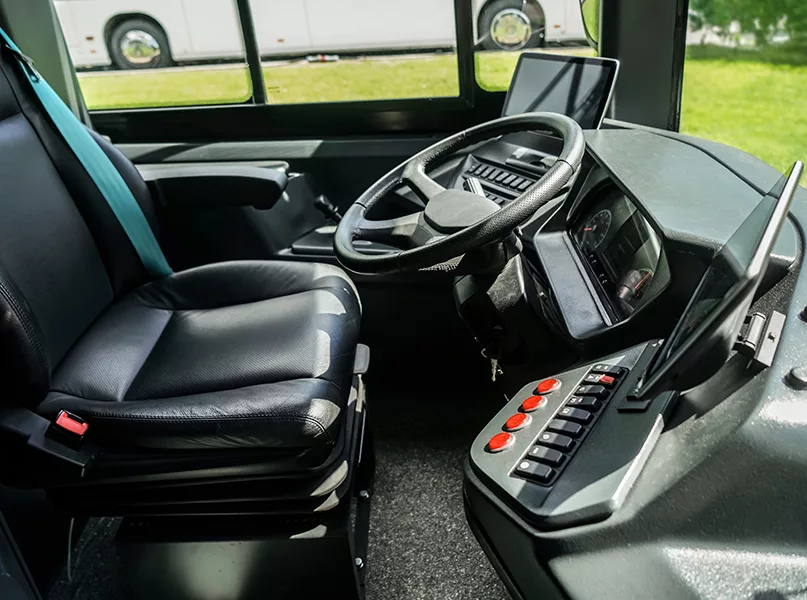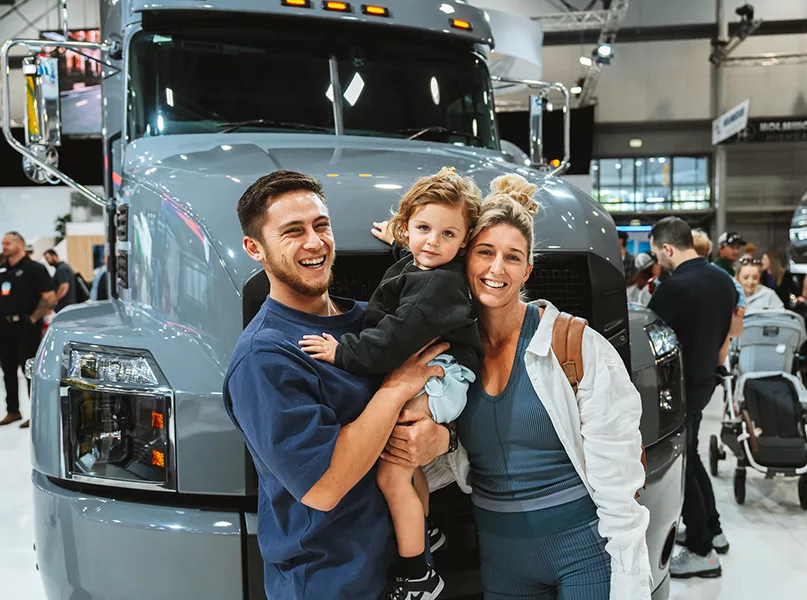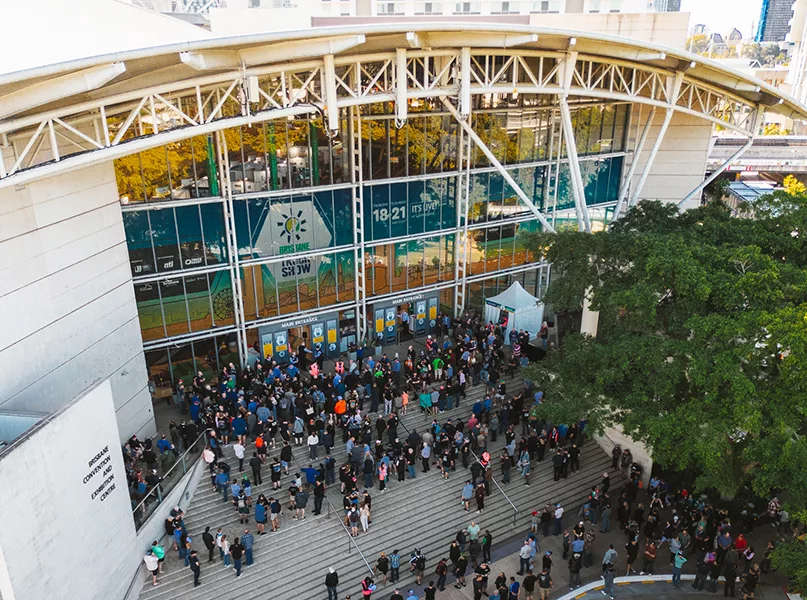SPOTLIGHT ON HEAVY VEHICLES IN AUSTRALIA
SKILLS SHORTAGE
However, the heavy vehicle industry in Australia continues to suffer critical shortages of skilled labour. This is not an anomaly, either, as labour market skill shortages are as deep as they are wide across the country.
The current pipeline of workers is struggling to keep pace with growing demand in the sector, with an order book extending well into 2024 that needs filling. The work does not end there, as once those vehicles are on the road, they also need to be maintained.


Recent vacancy figures indicate that several thousands of motor mechanics, electricians, metal fitters, and machinists are required to address the shortage.
In Victoria, the state government is also injecting an extra AUD$1 million into training more heavy vehicle drivers to keep supply chains moving through a partnership with the Victorian Transport Association (VTA).
The partnership offers accredited training for aspiring heavy vehicle drivers and assists them in securing employment as part of VTA’s Driver Delivery programme, which has received continuous investment from the government since it was launched in 2016, resulting in the training and placement of nearly 400 skilled drivers on the roads.
In addition to improving road safety, the programme aims to tackle heavy vehicle driver shortages, tailored to attract and retain younger drivers for critical transport and logistics supply chains.
SHOWCASING THE INDUSTRY
Along with the Technical and Further Education (TAFE) network and other Registered Training Organisations (RTOs), a stream of skilled workers from the Australian school system is required to rectify the labour shortage.
There is an overwhelming need to disseminate career information to students, and the wider public for that matter, to provide a more comprehensive understanding of the sector, the roles on offer, its operational diversity, and the job needs of the future.
A variety of initiatives promote careers across the country’s heavy vehicle industry, including the Brisbane Truck Show, the southern hemisphere’s largest road transport event displaying the most comprehensive range of trucks, trailers, components, equipment, accessories, and technology in Australia.
With an incredibly rich, continuous history that dates back half a century, the Brisbane Truck Show has always been about coming together, sharing ideas, discussing challenges, and showcasing the innovative ways to address them.
A record number of pupils were hosted at last year’s running of the Brisbane Truck Show, with well over 1,600 students from over 50 schools in attendance.
Australia’s largest-ever showcase of commercial zero-emission heavy vehicles (ZEHVs) was also on display at the 2023 event, from both major original equipment manufacturers (OEMs) as well as a raft of new players.
The ZEHVs exhibited ranged from battery electric vehicles (BEVs) and hydrogen fuel cell electric vehicles (HFCEVs) to more conventional trucks powered by renewable diesel, an advanced biofuel made from animal fats, vegetable oils, and agricultural waste.
Significant investment has been made towards increasing vehicle efficiency and reducing the emissions of diesel-powered vehicles to accompany the shift towards ZEHVs.
There are also calls for the Australian government to support the enablement of onshore renewable diesel refining, as the fuel is not currently commercially available in the country.
This is despite renewable diesel playing a critical role in decarbonisation, given its chemically identical properties to conventional diesel, which means that machinery using the fuel does not require modification and is widely supported by OEMs.
Access to domestically produced renewable diesel represents a significant and immediate opportunity to decarbonise a range of hard-to-abate sectors where alternative technologies are not readily available.
Diesel engines, traditionally the driving force behind the industry, have become a highly efficient and productive way of powering heavy vehicles since they were first developed over a century ago.
However, as Australia reduces its environmental impact in line with international commitments to reduce carbon emissions, the push towards ZEHVs has gained huge momentum.
All levels of government are currently considering the development of a coordinated approach to decarbonising the heavy vehicle task, covering a range of issues both transport and non-transport related.
As progress is made towards decarbonisation, the industry may change, reprioritise, or develop new technologies.


SUSTAINABILITY IMPROVEMENTS
For decades, improvements have been made to the environmental footprint of the country’s heavy vehicle industry.
The Australian government estimates that since 1990, heavy vehicle noxious emissions standards have reduced carbon monoxide (CO) and hydrocarbon (HC) emissions by over 80 percent.
This is despite the fact there are now approximately 60 percent more heavy vehicles on the road, and the total distance travelled has almost doubled.
However, even though the industry provides some of the world’s most efficient, safe, innovative, and technologically advanced vehicles, there remain significant barriers to the adoption of ZEHVs.
Some of these barriers include vehicle design rules, a lack of electric truck recharging and hydrogen refuelling infrastructure, and a temporary but significantly higher upfront cost.
The industry has made a compelling case for the removal of such obstacles for heavy vehicles operating across Australia. Therefore, its position on the regulatory changes needed to support next-generation ZEHVs is clear, but urgent action is required by the government and its policy and regulatory agencies.


INCREASING WEIGHT LIMITS
One of the main reasons why Australia has lower load axle limits than other developed countries is due to its sprayed seal road structures.
An interesting departure from other road structure designs, sprayed seals are effectively a thin layer of bitumen that is sprayed as a hot liquid onto a compacted base layer, which is then covered with a layer of aggregate to form the road surface.
Often, the base layer beneath the bitumen is unbound, which means that it may be treated with a stabilising agent such as cement, but sometimes it is not treated at all.
The result is a relatively cheap, flexible road type that is easy to construct and suitable for roads carrying several thousand vehicles a day. Usage of sprayed seals therefore grew rapidly after their introduction in the early 20th century, and they now account for around 70 percent of the total length of all sealed roads in Australia.
On the other hand, sprayed seals are very thin and susceptible to increases in applied load, unlike other rigid road structure types such as asphalt and concrete.
This is disadvantageous for ZEHVs in Australia, which have higher tare weights than conventional internal combustion engine (ICE) trucks due to the equipment comprising the electric drivetrain, such as the battery in the electric motor.
For HFCEVs, the problem is exacerbated even further when you add in the weight of the fuel cell and the hydrogen storage and delivery system.
A number of actions are required to address this issue, including research into next-generation sprayed seals to support higher axle loads.
Allowing heavier electric and hydrogen trucks across the whole of Australia will be vital in opening access to new low-emission heavy vehicles and ZEHVs, which alongside reducing environmental impact are also expected to provide other benefits such as reduced maintenance and greater permitted operating hours – currently restricted in some areas due to noise.
In March 2024, the Queensland government formalised a long-awaited change to maximum axle weight limits, allowing heavy vehicles to operate with a steer axle weight of up to eight tonnes (t) on selected roads in the south-east of the state.
The announcement puts Queensland on the map as a leader in future electric truck manufacturing, and ZEHVs will make a significant contribution to the state’s own emissions reduction targets.
The change means Queensland has become the fourth state to allow heavy-duty electric trucks on its roads.
It follows trials of higher mass limits for ZEHVs in New South Wales and South Australia, as well as the granting of a three-year permit to Volvo for the operation of a battery electric prime mover and semi-trailer combination on a network of state-owned roads.
Despite these promising reforms in individual states, the ongoing contribution of the heavy vehicle industry to Australia’s economy and emissions reduction targets remains at stake, and there is a need for the federal government to accelerate truck axle mass regulatory reforms at all levels.
The nation has everything it needs to meet emissions reduction targets, creating more local jobs and additional investment opportunities in the process.
The only missing piece of the puzzle is the regulatory framework to support the heavy vehicle industry, which seeks to transition to ZEHVs using technology that is currently available.
The process of changing some areas of heavy vehicle regulation, including mass and dimension requirements, demands careful analysis and requires time and attention.
HEAVY VEHICLE INDUSTRY AUSTRALIA PARTNERS
































